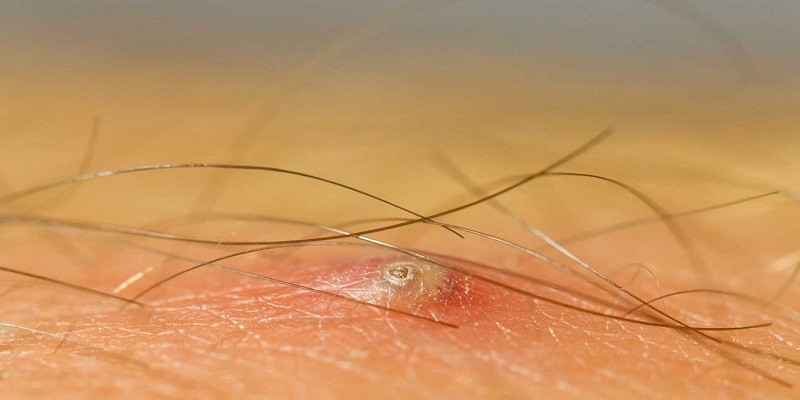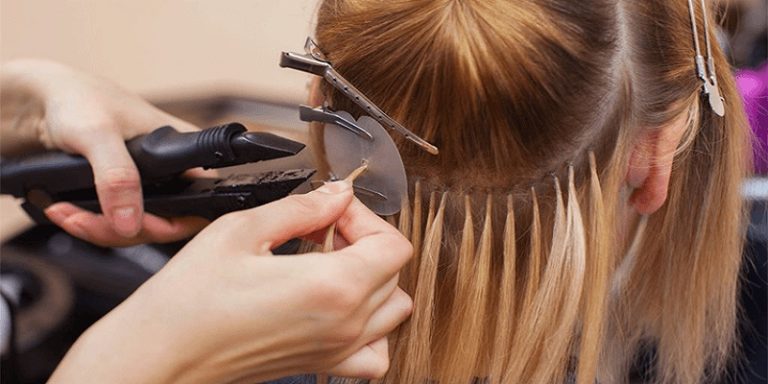How To Tell If It’S An Ingrown Hair Or Herpes?

Last Updated on June 18, 2025 by Jaclyn A. Neeley
Distinguishing between an ingrown hair and herpes can be challenging due to their similar appearances. However, understanding the differences in their symptoms, causes, and treatments can help you identify the condition accurately. This article will provide a comprehensive guide to help you differentiate between ingrown hairs and herpes.
Overview of Ingrown Hair and Herpes
Ingrown Hair: An ingrown hair occurs when hair grows back into the skin instead of rising up from it. This can cause inflammation, redness, and sometimes infection. Ingrown hairs are common in areas where hair is frequently removed, such as the face, legs, armpits, and pubic region.
Herpes: Herpes is a viral infection caused by the herpes simplex virus (HSV). There are two types: HSV-1, which primarily causes oral herpes, and HSV-2, which causes genital herpes. Herpes is a sexually transmitted infection that results in painful blisters and sores on the affected areas.
Symptoms
Ingrown Hair Symptoms
- Redness and Inflammation: The area around an ingrown hair becomes red and inflamed.
- Pus Formation: A small, fluid-filled bump may form, often with visible hair trapped inside.
- Itching and Discomfort: The affected area may itch and feel uncomfortable.
- Single Bumps: Ingrown hairs typically appear as single bumps centered around a hair follicle.
Herpes Symptoms
- Blisters and Sores: Herpes causes painful, fluid-filled blisters that can break open and ooze.
- Itching and Tingling: Before the blisters appear, the skin may tingle, itch, or burn.
- Flu-like Symptoms: Fever, headaches, swollen lymph nodes, and general fatigue are common during the first outbreak.
- Clusters of Blisters: Herpes sores often appear in clusters rather than as single bumps.
Causes
Causes of Ingrown Hair
- Hair Removal: Shaving, waxing, and plucking can cause hair to grow back into the skin.
- Curly or Coarse Hair: People with curly or coarse hair are more prone to ingrown hairs.
- Tight Clothing: Wearing tight clothing can increase the risk of ingrown hairs by causing friction and pressure on the skin.
- Improper Skin Care: Not exfoliating regularly or using products that clog pores can contribute to ingrown hairs.
Causes of Herpes
- Herpes Simplex Virus (HSV): Herpes is caused by HSV-1 or HSV-2.
- Sexual Contact: The virus is primarily transmitted through sexual contact, including vaginal, anal, and oral sex.
- Asymptomatic Shedding: Individuals can spread the virus even if they do not show symptoms.
- Non-Sexual Contact: Sharing personal items like towels or razors can also transmit the virus.
Diagnosis
Diagnosing Ingrown Hair
- Physical Examination: A healthcare provider can diagnose an ingrown hair through a physical examination.
- Medical History: Discussing your hair removal practices and skin care routine can help in diagnosis.
Diagnosing Herpes
- Visual Examination: A healthcare provider may diagnose herpes based on the appearance of the sores.
- Laboratory Tests: Swabs from the sores or blood tests can confirm the presence of the herpes virus.
Treatment
Treatment for Ingrown Hair
- Allow Hair to Grow: Letting the hair grow longer before shaving can prevent ingrown hairs.
- Proper Shaving Techniques: Shaving in the direction of hair growth and using a sharp razor can reduce the risk.
- Exfoliation: Regular exfoliation can help remove dead skin cells and prevent ingrown hairs.
- Topical Treatments: Over-the-counter creams and lotions can reduce inflammation and treat infections.
Treatment for Herpes
- Antiviral Medications: Prescription antiviral drugs like acyclovir, valacyclovir, and famciclovir can reduce the severity and frequency of outbreaks.
- Symptomatic Treatment: Over-the-counter pain relievers and topical anesthetics can help alleviate symptoms.
- Preventive Measures: Using condoms and avoiding sexual contact during outbreaks can prevent the spread of herpes.
Prevention
Preventing Ingrown Hair
- Proper Hair Removal: Use proper techniques and tools for shaving, waxing, or plucking.
- Exfoliation: Regularly exfoliate the skin to remove dead skin cells.
- Moisturizing: Keep the skin moisturized to prevent dryness and irritation.
- Avoid Tight Clothing: Wear loose-fitting clothes to reduce friction and pressure on the skin.
Preventing Herpes
- Safe Sex Practices: Use condoms and dental dams during sexual activity.
- Avoid Sharing Personal Items: Do not share towels, razors, or other personal items with others.
- Antiviral Medication: Taking antiviral medication as prescribed can reduce the risk of transmission.
When to See a Doctor
For Ingrown Hair
- Persistent Symptoms: If ingrown hairs do not improve with home treatment or become severely infected, see a healthcare provider.
- Signs of Infection: Seek medical attention if you notice signs of infection, such as increased redness, swelling, pain, or pus.
For Herpes
- First Outbreak: If you suspect you have herpes, see a healthcare provider for diagnosis and treatment.
- Recurrent Outbreaks: If you experience frequent outbreaks, consult your doctor for long-term management options.
Conclusion
While ingrown hairs and herpes can appear similar, they have distinct differences in symptoms, causes, and treatments. Ingrown hairs are typically single, red bumps that occur after hair removal, whereas herpes presents as clusters of painful blisters caused by a viral infection. Proper diagnosis and treatment are essential for managing both conditions effectively. If you are unsure about the nature of your symptoms, consult a healthcare provider for an accurate diagnosis and appropriate treatment.
FAQs
How do you know if you have herpes or an ingrown hair?
To distinguish between herpes and an ingrown hair, observe the symptoms. Herpes typically presents as clusters of small, fluid-filled blisters accompanied by fever, body aches, and swollen lymph nodes. Ingrown hairs appear as single, red, pus-filled bumps around hair follicles, often after shaving or waxing. Herpes sores are painful and take 2-4 weeks to heal, while ingrown hairs usually resolve within a week.
How do I know if my bump is herpes?
A bump is likely herpes if it appears as a cluster of fluid-filled blisters, is painful, and is accompanied by symptoms like fever, headache, and swollen lymph nodes. Herpes sores often recur and take 2-4 weeks to heal. In contrast, ingrown hairs are single, red bumps with visible hair in the center and typically resolve within a week.
How to tell the difference between razor bumps and herpes?
Razor bumps, or pseudofolliculitis barbae, appear as red, itchy, pimple-like bumps shortly after shaving and are not contagious. They are caused by hair growing back into the skin. Herpes sores, however, are clusters of painful, fluid-filled blisters that may be accompanied by fever and swollen lymph nodes. Herpes is a contagious viral infection and sores take longer to heal.
What are the most effective home remedies for treating ingrown hairs?
Effective home remedies for ingrown hairs include applying warm compresses to soften the skin and help the hair emerge, using gentle exfoliants like salt or sugar scrubs, and keeping the area clean with antibacterial washes. Avoid shaving the affected area until it heals. Over-the-counter hydrocortisone cream can reduce inflammation and itching.
How can I prevent ingrown hairs from occurring in the first place?
To prevent ingrown hairs, avoid shaving too closely and use proper shaving techniques: shave in the direction of hair growth, use a sharp, single-blade razor, and apply shaving gel. Exfoliate regularly to remove dead skin cells. Consider alternative hair removal methods like laser treatment or depilatory creams. Wearing loose clothing can also reduce friction and prevent ingrown hairs.






